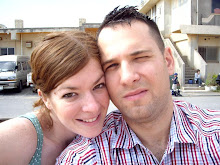
Here is the thing about failure: Once it starts, once that ineffable losing streak begins to weave its path into your day-to-day fate, you never again regain the sense of invincibility that you once had. Every teenaged boy is a bristling ball of security. No matter how abused or down-trodden, no matter how self-conscious or needy in most respects, no teenager ever thinks of himself as anything other than invincible and eternal. Sure, there are the death fantasies and there are the moments of horror about complexion or school-yard cruelty, but the fact remains, hope and life are still intertwined in inexorable affinity.
There is a point however, usually sometime in the mid-to-late twenties, when the inherent flaws and perfectly honed responses that family, friends and community have built into the individual, when failure begins to raise its ugly head. There is no way to avoid it totally. Some people can manage to make it into their thirties; usually they have money or phenomenal looks to back them up, some magical charm that keeps them safe from the inevitable, without facing up to the evil visage of their own self-defeating nature.
When it comes, it crushes. There is nothing like a true failure, a failure in career, in love, in friendship or general denial of the boons and graces that life has granted hitherto. It is the end, quite simply the end of childhood. It is not the beginning of adulthood, merely the end of the previous, grace-filled state. Failure doesn’t make one a man. Failure can hone a person’s manhood, but it does not create, ex nihilo, manhood.
That is what failure does not do; let’s talk about what it does. It steals, even if you give yourself to your failings, even if you have granted failure every possible advantage and license, it still steals the sense of value that you had a right to. It steals it away and while you may regain this or that sense of self, or this or that sense of worth, you can never regain the sense of value, inherent value and pride that you held beforehand. In some cases this is a good thing. Inflated sense of worth is a negative attribute and failure is the comeuppance of the arrogant soul. But it is a cruel lesson learned.
One might find, as I confess to having found, that later in life, after the failure of youth and after the hard won and oft referred to struggle to regain self-worth, that any minor failing, and minor falling out or disagreement, any minor ruffle in the otherwise placid surface of day to day life causes me to question everything I hold dear. I am not a man, I am not of value, I am not capable, I am not intelligent, I am not worthy or worthwhile. I am merely a failure.
Each time I reach this conclusion, each time I fail, I have to re-fight the battles of my nature and my upbringing and regain the sound footing that tells me that I am a man, that I have value, that I am capable, intelligent, worthy and worthwhile. But each time, that victory, once won, is less sweet. It is tinged, each time, by a greater and greater knowledge of how tenuous, how easily lost the ground is. The battles are less difficult to win, the points less difficult to score, because in each battle I better know the ground recovered. But that makes the ground worth less and less. And I am not becoming MORE of a man, etc. each time. I am remaining, sustaining a manhood. My value does not increase, but the value of holding onto it decreases. It is a losing battle, in the face of failure.
Just as pain is a supposedly necessary part of physical existence, failure is a necessary part of the emotional makeup of a man. But just as pain is also attached to destructive forces and the deterioration of the body, so failure is the anathema of success. And it is a poison that once tasted is forever a part of the self.

